Yoga BLOG

Sleep meditation for better sleep – the best tips
by Stefan
on May 10 2023
Sleep meditation for better sleep – what can you do?
Many people are completely exhausted from the day, yet many are unable to relax and unwind due to a thousand thoughts. This directly impacts their ability to fall asleep. Therefore, it's crucial that you find a routine that helps you find inner peace and calm. You should also make sure you're not overly stressed during the day. In this article, you'll learn why meditating before bedtime can help and why meditation is great in general.
What is meditation?
Those who are completely new to this field should first understand what meditation actually is. It's a method of letting go of your impulses, fears, and worries, becoming more aware of your feelings, and reaching a deeply relaxed state. This allows you to restore your body, mind, and soul.
Generally speaking, meditation is a state similar to when you are asleep. You are still fully here and you are always in control of your thoughts, yet your surroundings become slightly blurred; you enter a light trance state.
For many people, meditation is a way to unwind from everyday life and treat themselves to a moment of peace. Others use it to stop the carousel of thoughts.
The best advantages
Regardless of when you meditate, the state you enter is wonderful and restorative for your entire system.
Below you can see the most important benefits that come with regular meditation:
You feel much more inner peace and relaxation.
Your thoughts are no longer so stressful and you become more relaxed in general.
Your nervous system relaxes.
This can reduce stress.
This allows you to let go of a lot of emotional baggage.
Nerve cells can realign themselves with the help of regular meditation.
This can increase focus, mindfulness and concentration.
Evening meditation: Why can this be so beneficial?
As you can see, consciously pausing for a moment has a multitude of positive effects. If you're feeling stressed in the evening, instead of watching TV, close your eyes and let your thoughts wander.
After a long day, many people have countless thoughts in their heads, and these are usually already moving on to the next day's to-do list. This means your mind never feels at rest. If you go to bed with this carousel of thoughts, you'll hardly be able to fall asleep. Anyone who takes the time to do a short evening meditation will notice a difference almost immediately. Stressed people, in particular, should establish this as a routine.
You can also use the few minutes of meditation to "think through" all your worries and insecurities so you can go to bed with a clear mind. In this context, it might be helpful to write everything down so you can let it all go.
Suppressed feelings can surface through meditation. Therefore, it's very important that you accept everything that's present in the moment of meditation and don't push it away. If you need to cry, that's perfectly fine; if you get angry, you can also accept those feelings.
Meditation can help you draw a clear line between work and leisure time. Therefore, it may be advisable to meditate right after you get home. You don't necessarily have to do it a few minutes before bedtime.
When you meditate, you can increase your concentration, which in turn has a positive effect on your thoughts. This allows you to more consciously decide which thoughts you want to think before going to sleep and which you don't.
What meditations can you do?
You can decide each evening which meditation is right for you. There are a variety of guided meditations you can do every day. You can find these on CDs, on YouTube, or in meditation courses. If you prefer free meditation, you can try the following tips:
a) Pay attention to your body (body scan)
This is a great way to become aware of your own body and achieve a better sense of body awareness. For this meditation, sit or lie down on your yoga mat and relax. Now begin to "scan" your body from top to bottom. Ask yourself the following questions:
How do certain areas of your body feel (back, neck, legs, arms, etc.)?
Where do you feel tight?
Where can one see the vastness?
Do you have any pain anywhere?
You'll notice that you become significantly calmer and more relaxed. Your body, mind, and soul will recover well, and you'll strengthen your health.
b) Focus on breathing
If you want to practice a simple yet highly effective meditation technique, simply concentrate on your breath. Feel yourself inhaling through your nose, feeling the breath reach your belly, and exhaling again. Repeat this process for a few minutes. You'll notice that you become much calmer and your sleep improves significantly.
Pay attention to:
A comfortable sitting position on your meditation cushion
Relax your body, face, jaw, shoulders and neck
Try to focus fully on your inhalation and exhalation
When your thoughts wander, always return to your breath
What additional tips can help you find more peace of mind?
In addition to the tips above, you can also consider the following points:
Be sure to turn off your phone, tablet, or TV at least an hour before bedtime. This will avoid exposure to blue light, which can negatively impact your sleep quality.
Essential oils or incense blends can help you drift off to sleep even more easily. Valerian, rose, chamomile, lavender, neroli, or cedarwood are soothing and bring calm to your system.
When meditating, it's important to ensure you're in a quiet environment. This has an additional relaxing effect and is important for preparing you for restful sleep.
If you follow these tips and meditate daily, you will notice that you can fall asleep much better.
Have you tried meditating in the evening? If so, how was it for you? Did you notice any changes?
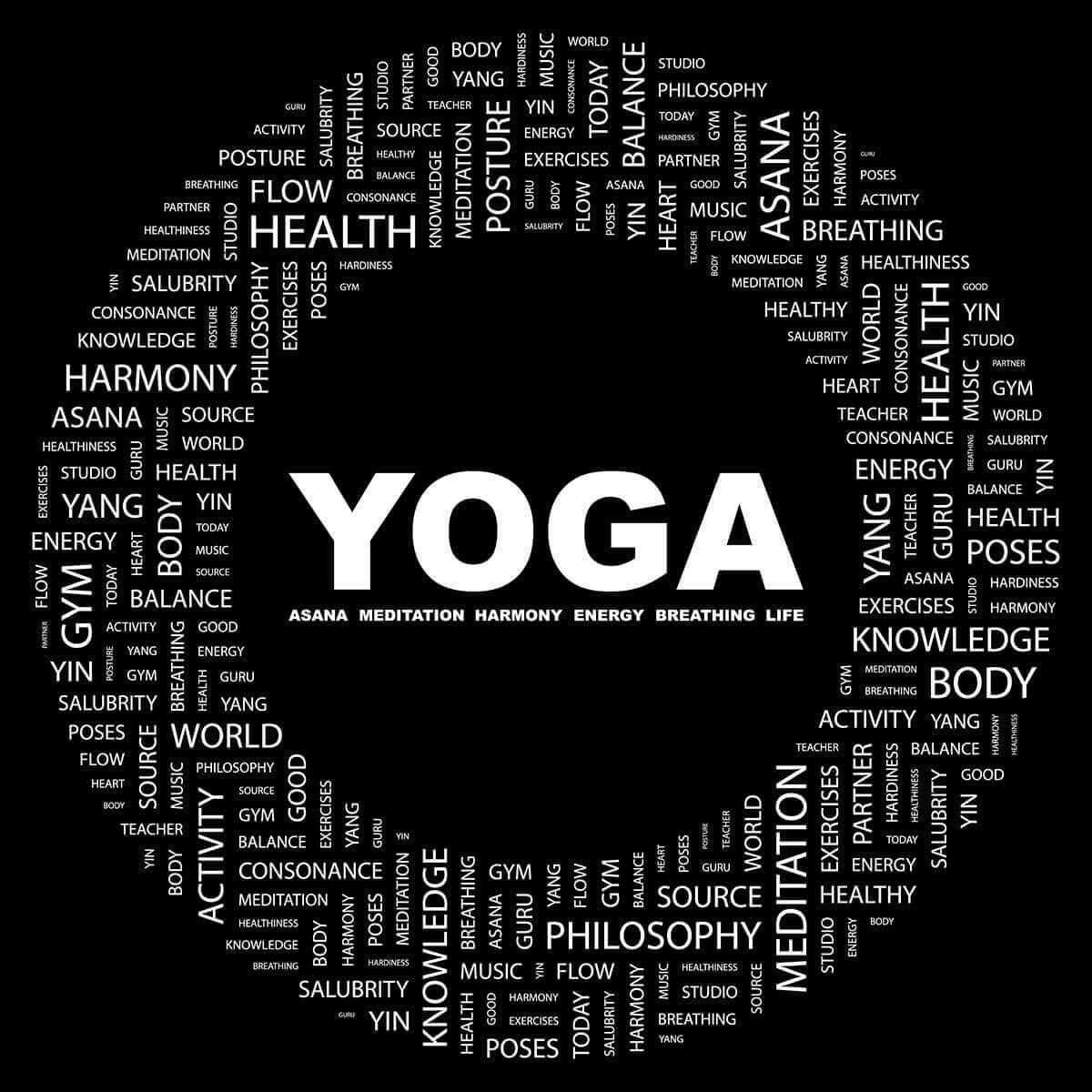
Is yoga, as we know it, just a myth?
by Nick
on May 10 2023
Is yoga, as we know it, just a myth?
Nothing about yoga is as many yoga practitioners believe: The results of the yoga study by Briton Mark Singleton are astonishing and challenge the objections of all those who trust in the ancient Indian yoga spirit of "body, mind & soul." In his book, published in 2010 by Oxford University Press, the religious scholar Singleton presents it very precisely and comprehensively: Body-focused yoga is a relatively new teaching, not primarily Eastern but equally strongly Western in character. Let's summarize the core statements of "Yoga Body – The Origins of Modern Posture Practice" and form our own opinion.
Yoga as a tiny cog in Indian culture
In the Western world, we mostly know yoga as a form of Hatha Yoga . Hatha Yoga is said to have originally come from India, where it was practiced as part of a millennia-old Hindu culture. Singleton argues, however, that in classical texts such as the Upanishads or the Bhagavad Gita, yoga is mentioned at most in the sense of spiritual perfection and meditation . Asanas seemed to be of such secondary importance that they served solely to control the breath and sit still in a meditative state. Contemplation was desired, and asanas represented one path among many ways to reach the desired state. The roots in ancient Indian practices therefore have little to do with health and fitness-oriented yoga styles of the 21st century. It was only the collision of Indian nationalism after the end of British colonial rule and the European physical culture movement a good 100 years ago that "our" yoga was shaped by refining Western gymnastic exercises with a spiritual superstructure.
Yoga as a trend sport of the late 19th century
The term "physical culture" emerged at the end of the 19th century and is linked to increasing industrialization. Fewer and fewer people earned their living through farming and other physically demanding activities. Many moved to the cities and worked in factories. Factory owners were concerned with the productivity of their workers and thus promoted physical culture as a national mission. The image of the athletic, well-trained body was born at that time and left its mark in India as well. Hatha Yoga, previously practiced to control life energy in the sense of Pranayama – for purification and contemplation – became postural yoga. At a time when the Olympic Games were being revived by Pierre de Coubertin, Swami Sivananda, Paramahamsa Yogananda, Bishnu Choran Gosh, and more spiritually motivated representatives such as Vivekananda and Sri Aurobindo breathed new life into the idea of yoga.
What Turnvater Jahn and the first modern bodybuilder have to do with yoga
Religious scholar Mark Singleton, who lives in Santa Fe and teaches at St. John's College there, doesn't just make provocative claims. He supports his theses with historical sources, interviews contemporary witnesses, and considers findings from modern yoga research. Interestingly, in this context, the fitness wave in India at the end of the 19th century, influenced by bodybuilding pioneer Eugen Sandow, also had a political significance comparable to the German gymnastics movement of Ludwig Jahn, the "father of gymnastics." Indian men wanted to strengthen their bodies to break free from the colonial rulers. At the same time, however, they partly adopted training methods from the British army. By blending them with a context influenced by Hindu, Tantric, philosophical, and New Age thought, they gave physical culture its own direction and a completely new aspect of health. The legend of "body, mind, and soul" dates back to this time, making it only about 100 years old. In traditional yoga philosophy, mind and soul are one; there is no distinction.
Singleton's conclusions
Yoga is an exciting transnational phenomenon. Philosophical traditions and centuries of accumulated knowledge related to energy flows and states of consciousness have evolved into a new method through global cultural encounters and scientific advances. Modern yoga styles have emerged from cultural change and continue to evolve. This is precisely what makes yoga, this method that is neither sport nor religion nor medicine, yet encompasses a little of all of these, so unique.
Image © StudioM1
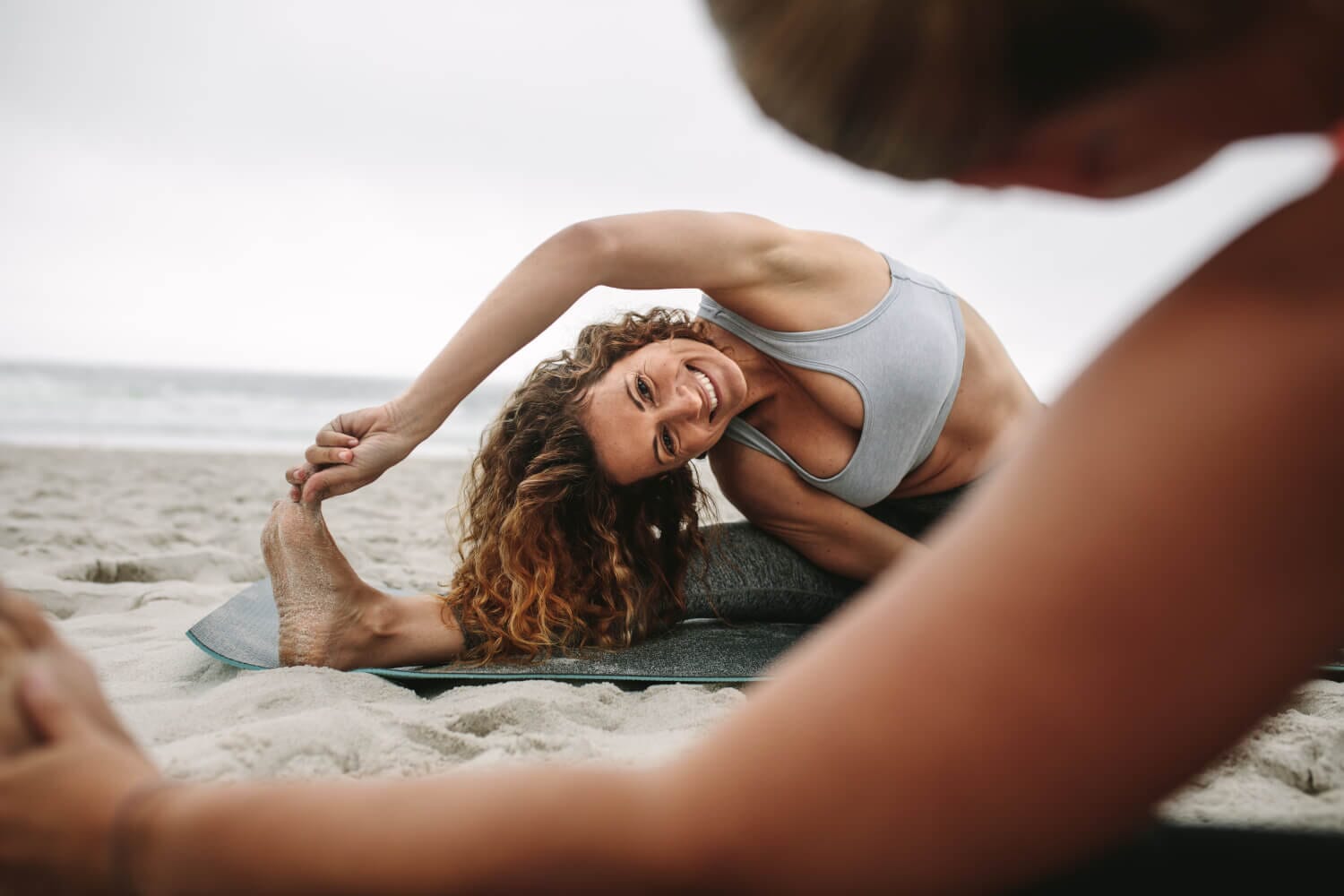
Five tips for yoga on the beach
by Stefan
on Apr 27 2023
what do you need to know?
Yoga on the beach is a real highlight for many people. If you've been practicing yoga for a while, you know how amazing the results can be with the exercise sequences from Buddhist teachings. But even as a newbie, you can enjoy a yoga retreat by the sea and immerse yourself deeply in the wonderful effects of yoga. This article shows you the five best tips for your yoga vacation.
Tip 1: When is a yoga vacation on the beach right for you?
In general, the sea and the beach have a restorative effect on the human body. Therefore, there's nothing wrong with combining yoga and the beach.
The following benefits await you during this trip:
The salty air on the beach is good for your respiratory system, allowing your entire body to recover. Even for those who usually have difficulty breathing, beach exercises can be particularly effective. To be on the safe side, if you have any physical pain or illnesses, you should consult a doctor beforehand.
The sun awakens your spirits. You automatically become happier and more joyful. The sun causes us to produce vitamin D3 in our skin, which in turn has a positive effect on our mood. The good news is that this so-called sun hormone can even be stored. This means you can continue to benefit from your stored vitamin D3 even after your vacation.
Movement is good for body, mind, and soul. Yoga is a particularly attractive practice for harmonizing your entire body and supporting your health in a sustainable way. Gentle flows can feel like wellness. The daily grind of home suddenly seems a world away, and you can recharge your batteries and recharge your batteries. Gentle asanas strengthen, calm, and stretch your body, while challenging flows will get you sweating.
Community with other women or men is beneficial and boosts self-confidence. Those who practice various flows together with other yogis feel connected and can engage in deep conversations during their time out.
fitness, sport, yoga and healthy lifestyle concept - group of people doing warrior pose on beach
Tip 2: Planning your trip properly
As you can see, the benefits of the trip are impressive. All of these advantages await you if you choose this type of vacation or even a day trip.
To fully enjoy your trip into nature, you should keep certain things in mind.
It is therefore important that you obtain sufficient information about the provider. There are often hotels located directly on the beach that offer great deals. In some cases, private individuals also offer yoga classes. In these cases, you would have to arrange your own accommodation. It's important to ask yourself beforehand what exactly you want. Perhaps you simply want to travel to the beach and take a few hours there occasionally – in this case, it's sufficient if regular yoga sessions are offered nearby. If, on the other hand, you want to go on a so-called yoga vacation, you should choose a high-quality and comfortable hotel with appropriate amenities. Everything is usually included there.
Which yoga styles would you like to do? You need to ask yourself this question before booking your trip. Beginners, in particular, should avoid a retreat that only offers advanced courses. The style of yoga is also crucial. Yin Yoga, for example, is perfect for calming down, giving your body more flexibility, and recharging your energy. If, on the other hand, you want to lose a few pounds, you should choose an Ashtanga or Vinyasa course. Many options also offer a variety of different yoga styles—this is especially interesting for those who want to gain insight into the broad realms of Buddhist teachings.
Where should the journey go? In addition to the points mentioned above, the destination plays a significant role. If you want to stay in Germany, there are a wide selection of options along the North and Baltic Seas. Those who prefer to put their yoga mat down somewhere else will also find excellent options on the beaches of other European countries. Spain, Portugal, and Italy are popular destinations for a wonderful beach and yoga vacation.
Tip 3: What are the two best asanas for the beach?
In the following section, we'll introduce you to the best exercises for the beach. For these exercises (especially the second one), you should pack a high-quality yoga mat that's also designed for outdoor use.
a) The tree
Here, you stand upright and first pull your right leg up and place it over your left thigh. You're standing on just one leg, while the other is either leaning against your ankle or resting on your thigh. Your arms are pointing upwards. This is a perfect position for more balance and equilibrium. Then you switch sides.
https://videopress.com/v/bDb6nnBA?resizeToParent=true&cover=true&loop=true&playsinline=true&preloadContent=metadata&useAverageColor=true
b) Swivel seat
This exercise is ideal for stimulating your digestion. It's also perfect for beginners and professionals. Sit upright and stretch out your right leg, bending your left leg. Wrap your right forearm around your left leg and twist your upper body to the left. Repeat this exercise on the other side.
Tip 4: Meditation: Why it shouldn’t be forgotten!
For a holistically relaxing summer vacation, meditation is a must. After valuable flow sessions, it's advisable to familiarize yourself with various meditation techniques on a cushion . When choosing a cushion, make sure it's of appropriate quality and suitable for outdoor use. Many yoga retreats automatically include the option of meditation sessions, because experienced yogis know that shavasana, or conscious pause, perfectly rounds off the practice sequence.
Depending on the retreat, different meditation techniques are taught. Breathing exercises also play an important role. This allows you to immerse yourself even deeper in the yogic experience and achieve the best results. If you practice yoga alone on the beach, you can follow it with a guided meditation or simply surrender to the sounds of nature.
Tip 5: Enjoy nature and external stimuli
Those who already have extensive experience with indoor yoga will be impressed by how different it is at the beach. There are many more stimuli here: the sound of the sea, the sun on your skin, the wind in your face. Enjoy all these special moments and mindfully perceive each one. You'll notice that you become even more at one with yourself and nature.
Fitness women sitting on yoga mats at the beach doing stretching workout. Women practicing stretching postures of yoga sitting near the sea.
Have you ever practiced various asanas on the beach? If you have experience, how was it? What were the benefits?
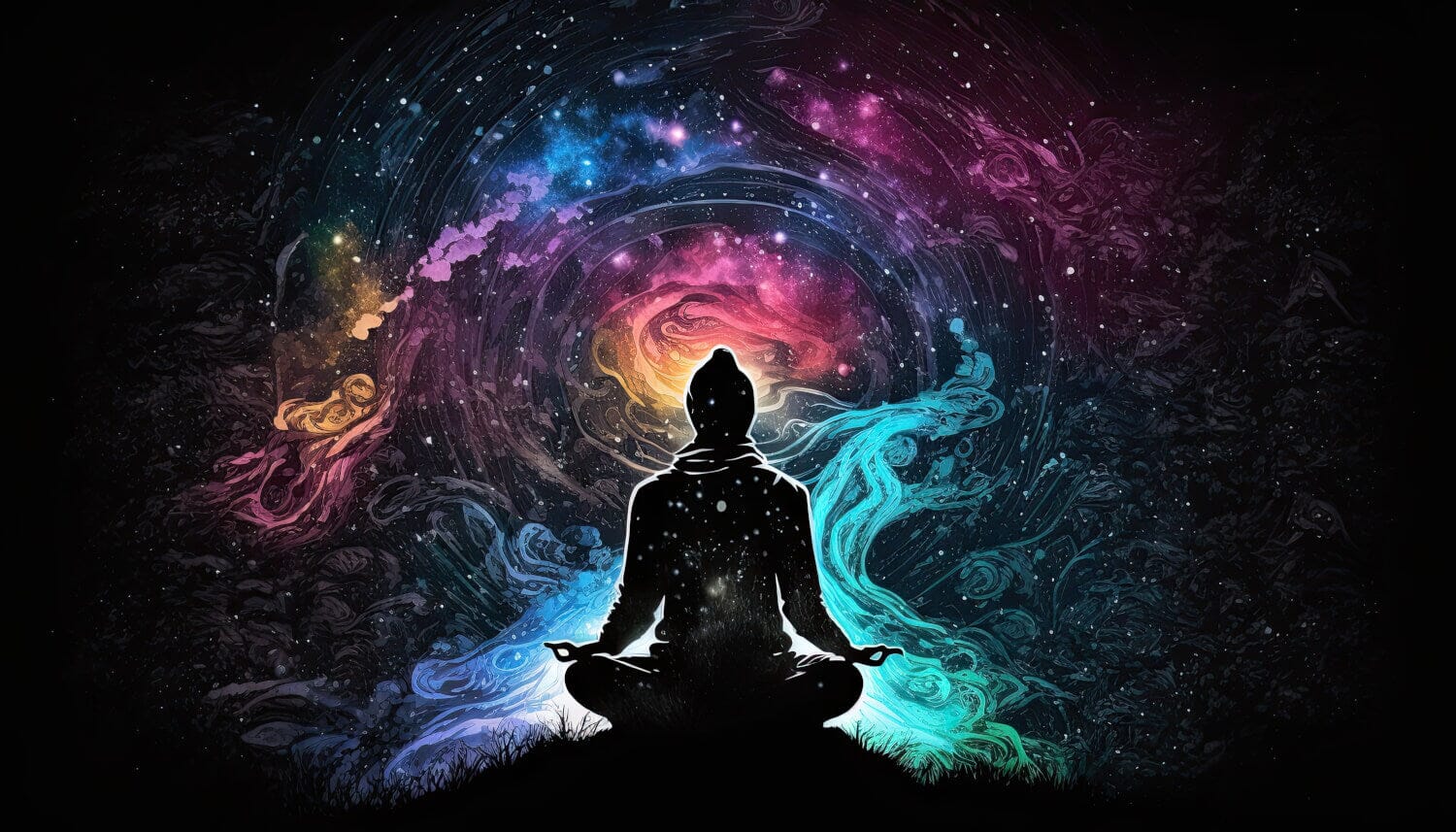
by Stefan
on Apr 14 2023
Discover inner peace
Are you longing for peace and serenity? Your daily life is stressful, and you don't know how to unwind? Then Sahaja Yoga could be perfect for you. Those seeking spiritual experiences can integrate this form of meditation into their daily routine. You'll find all the important information in this article: be inspired and find deep peace within.
Concentrated relaxed man standing with closed eyes, having relaxation while meditating, trying to find balance and harmony isolated on gray. Yoga and meditation concept
The term Sahaja Yoga: What does it mean?
Sahaja Yoga has existed since 1970 and is considered a "religious movement." This concept, considered a meaningful continuation of the ancient yoga tradition, was developed that year by the Indian Dr. Nirmala Srivastava (often referred to as Shri Mataji Nirmala Devi). The focus of this yoga practice is the Kundalini energy, which is meant to be awakened. People with an awakened Kundalini energy are almost unstoppable, as they are fully connected to their self and their inner wisdom.
By the way, the word Sahaja means "spontaneous" and in this context means that you are able to enter into meditation spontaneously.
What is the goal of Sahaja Yoga meditation?
The ultimate goal of yoga and meditation is always for people to be in harmony with themselves—and not just during their time on the yoga mat . Sahaja Yoga also aims to help people connect with their Kundalini energy and thereby experience a peaceful and fulfilling life. Thanks to this meditation, yogis come closer to this goal.
What role do the energy channels and chakras play?
To understand the principle of Sahaja Yoga meditation, you need to know that the energy channels and centers (chakras) serve as the basis of this teaching. The interaction of the nadis and the chakras is responsible for a person's well-being, whether they have much or little energy, and whether their energy is moving or not. According to Shri Mataji, it is important that all of these are in harmony to enjoy optimal mental, psychological, and physical health.
What chakras are there?
To give a brief overview, we list the seven most important chakras and their meaning.
Muladhara Chakra (root chakra) stands for basic trust and security; it is located at the end of the spine.
The Svadhistana Chakra (sacral chakra) is responsible for sexuality and creativity. It is located below the navel, in the lower abdomen.
The Manipura Chakra (solar plexus) is responsible for self-confidence, self-control, discipline, and contentment. It is located directly above the navel.
Anahata Chakra (heart chakra) is located directly in the heart space and represents compassion, love and empathy.
Vishudda Chakra (throat chakra) is important for clear pronunciation and authentic communication; it is located in the larynx.
The Ajna Chakra (third-eye chakra) represents intuition. It is located between the eyebrows.
The Sahasrara Chakra (crown chakra) represents collective consciousness and direct access to the spiritual world and the universe. It is located a hand's breadth above the top of the head.
When these chakras are balanced, you feel good and in harmony. It's also important that the Kundalini is in motion—this makes you feel strong, creative, and centered.
There are also nadis, which are referred to as energy channels. There are three different types:
Sushumna Nadi (this is the central channel, it runs along the spine to the crown chakra)
Ida Nadi (this energy channel is on the left side of the body and represents the energy of desire)
Pingala Nadi (located on the right side and includes the physical activities)
Can Sahaja Yoga be practiced by everyone?
The technique can be used by anyone, meaning it's right for you if you feel it's right for you. Here, you should listen to your gut feeling and simply give it a try if you're interested. Thanks to the great teachers and the worldwide distribution in over 120 countries, it's possible to get a glimpse of it almost anywhere these days. Sahaja Yoga can be an essential step on your path to self-realization.
What are the benefits of Sahaja Yoga?
This form of yoga is very transformative and has a lasting effect on your well-being.
With the help of Sahaja Yoga you can bring your mind, soul and body into harmony.
In addition, you will experience a kind of small enlightenment and be able to realize your spirituality. Your experience will change, and you will increasingly connect with your essence.
In order to practice meditation in absolute silence, the awakening of the Kundalini is a prerequisite. This allows you to enter a divine, thoughtless state of consciousness. For this, the opening of the third eye is necessary.
If you manage to reach this state, you will experience moments of complete silence, meaning no thoughts in your head.
If you've done everything correctly, you'll feel a cool breeze on your hands and above your head. Don't stress if you don't feel it the first time.
If you're unsure, you should find a guru or yoga teacher who can guide you. This will make it easier for you to reach this state on your meditation cushion .
How does the process work?
To ensure each participant is well-prepared for the program, it lasts 90 minutes. It consists of a theoretical and practical part: The theoretical part explains everything about the nadis, energy centers, and Kundalini energy, while the practical part reinforces what you have learned through physical exercises. To round off these sessions, the energy field is also cleansed.
In addition, these elements play an essential role:
Mantras
poetry
Music
Have you tried Sahaja Yoga Online before? If so, how was it for you?
Iyengar Yoga – achieving your goals better with aids
by Nick
on Apr 08 2023
Iyengar Yoga – achieving your goals better with aids
The world of yoga is extremely diverse. Therefore, it's entirely possible that you'll get along better with one yoga teacher than another, or that a yoga class at a new studio will be completely different from your usual one. Yoga is divided into countless styles, and you'll have to find the one that best suits your individual needs. A relatively new yoga style is Iyengar Yoga. This yoga tradition may be ideal for you if you want to perform your asanas precisely and enjoy their effects to the fullest.
What distinguishes Iyengar yoga from other yoga styles?
A basic rule of all yoga styles is that you should only go as far into each asana as you can perform it cleanly and without pain. Sometimes, however, you are only missing a few centimeters to be able to perform the yoga pose as described in the textbook. To help them perform the asanas, practicing Iyengar yogis use aids called "props." These aids include non-slip yoga mats , straps , cushions, blocks , and benches . A trained Iyengar yoga teacher will ensure that you stay in the pose for a long time. They will choose the asanas carefully and take external conditions such as the room and weather into account, as well as the well-being of their students. Alongside the asanas, pranayama is an integral part of the Iyengar class - breathing exercises that are said to have positive effects on a subtle level.
You can recognize a genuine Iyengar yoga class by the props used. On the other hand, a certified Iyengar teacher must have completed an intensive and demanding training course, which usually takes several years and is only offered in specialized schools and ashrams.
Props make yoga possible for everyone
Yoga is a discipline that inspires practitioners from many cultures and all age groups alike. The fact that everyone can practice yoga is nowhere more true than in Iyengar Yoga. The carefully used props ensure a clean and gentle hold of the asanas. This makes Iyengar Yoga ideal for therapeutic work. Even physically challenged, ill, and elderly people can fully enjoy their yoga class thanks to these props.
Iyengar yoga is also suitable for pregnant women who want to relax and prepare for childbirth under the guidance of an experienced teacher. Competitive athletes also frequently seek advice from Iyengar teachers to relieve stress on their bodies before a competition or during training, gain strength, and face new challenges.
Precise practice for full enjoyment of the effects
In Iyengar yoga, it's extremely important that you practice with precision and concentration. The asanas, some of which are held for long periods, are designed to strengthen the body in all areas and create a sense of balance. These strengthening effects also have a positive impact on the mind and your well-being. Iyengar yoga is a variation of Hatha yoga and is ideal if you want to practice with great precision and experience maximum positive effects.
Who was BKS Iyengar?
BKS Iyengar, the inventor of Iyengar Yoga, was born in 1918 in Bellur, South India, and died in 2014 at the ripe old age of 95. As a young man, he was in poor physical condition and sought advice from various yoga teachers. Eventually, Iyengar began to observe himself closely while practicing. He investigated which exercises had a particular effect on him and which did not. Iyengar himself practiced yoga for more than three hours a day until his death and was noted for his excellent health and friendly aura. In conversations, Iyengar always referred to the sutras of the Indian scholar Patanjali, which formed the theoretical and religious foundation of his teachings.
Iyengar Yoga is right for you if a good yoga class involves practicing your asanas precisely and expecting your mind to calm down in a wonderful way thanks to the improvement in your constitution.
©iStock.com/bodrumsurf
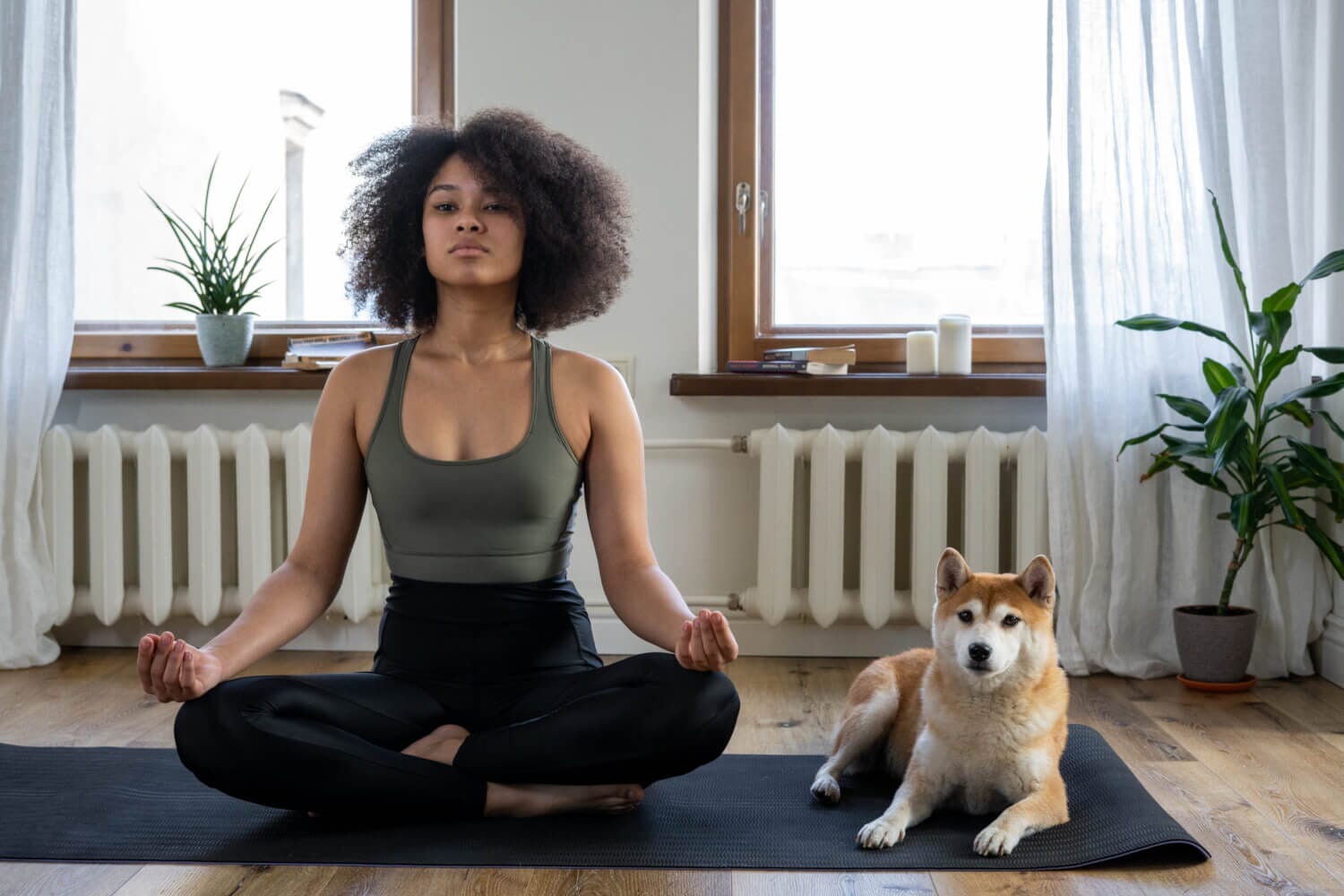
Yoga: not only a philosophy of life, but also a sport
by Stefan
on Apr 03 2023
Yoga has gained increasing importance in recent years, both as a philosophy of life and as a form of physical activity. Originally developed in India, yoga has spread worldwide and inspired millions of people to incorporate this practice into their daily lives. Especially with the right clothing, yoga can become an incredible experience. For example, use an Urban Sports voucher code , which offers you incredible discounts on attractive and comfortable yoga apparel. In this article, we will explore the various aspects of yoga as a philosophy of life and as a sport and show how it can contribute to promoting physical and mental well-being.
The Basics of Yoga: An Ancient Tradition
Yoga has its origins in Indian culture and is a practice that works on physical, mental, and spiritual levels. There are various yoga traditions and styles with different focuses, but at its core, it's about bringing body, mind, and spirit into harmony. As a philosophy of life, yoga encompasses principles and techniques aimed at expanding consciousness and leading a harmonious life. Ethical and moral values, as well as mindfulness, play an important role in this.
Yoga as a sport: The physical benefits
Yoga as a sport involves performing various physical postures (asanas) and breathing exercises (pranayama) aimed at strengthening muscles, increasing flexibility, and improving balance. The physical benefits of yoga are numerous and include improving posture, relieving back pain, strengthening the immune system, and stimulating circulation.
A great way to try yoga or deepen your practice is to use an Urban Sports voucher code. With this voucher code, you can participate in various yoga classes and studios in your city and discover the benefits of yoga as a sport. The variety of yoga styles offered allows you to find the right workout for your needs and goals.
Mental and emotional benefits of yoga
In addition to its physical benefits, yoga also has positive effects on mental health. The practice of yoga can reduce stress, alleviate anxiety, and lead to inner peace and serenity. Breathing exercises and meditation, which are often an integral part of yoga classes, promote concentration and body awareness. Regular yoga practice also helps you better manage emotions such as anger, sadness, or frustration, and can lead to increased self-confidence and self-esteem.
The variety of yoga styles: something for everyone
There are numerous yoga styles and disciplines, each with a different focus and thus catering to individual needs and preferences. Some styles, such as Hatha Yoga or Iyengar Yoga, focus on precise alignment of postures and are gentler, while others, such as Ashtanga Yoga or Vinyasa Flow, are more dynamic and powerful. Yin Yoga, on the other hand, focuses on holding stretches for longer periods and has a particularly relaxing and restorative effect. Kundalini Yoga combines physical exercises with breathing techniques, mantras, and meditation, and aims to awaken life energy. With the wide selection of yoga styles, it's easy to find a style that suits your needs and goals.
Integrating yoga into everyday life: For a balanced life
Yoga can be viewed as both a regular exercise routine and a complementary practice to other physical activities. There are numerous ways to incorporate yoga into your daily routine, whether by attending a class at your local studio, participating in online yoga classes, or practicing short yoga sequences in your own home. Regular yoga practice can help reduce stress, increase overall well-being, and enhance your quality of life.
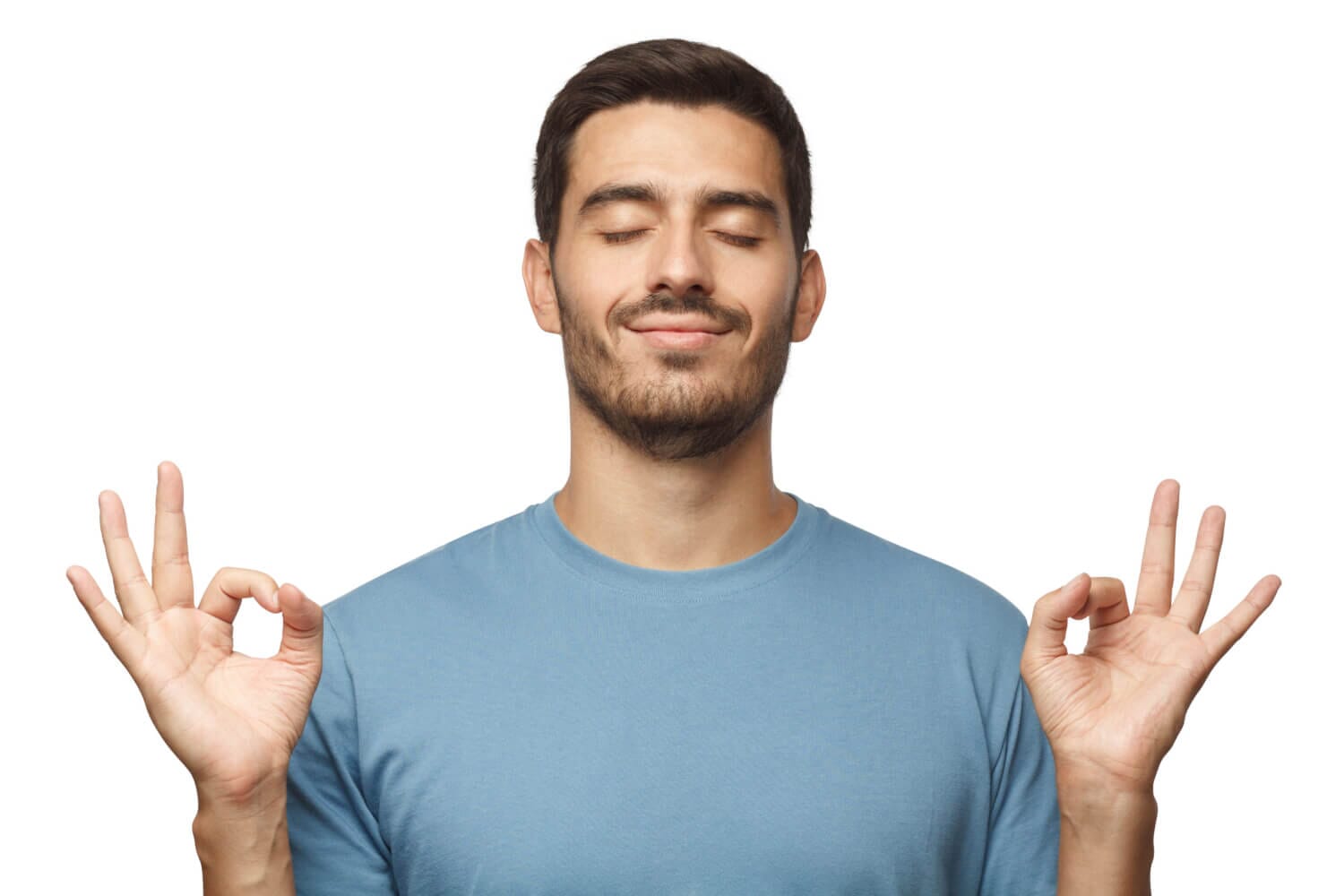
by Stefan
on Mar 22 2023
what do you need to know?
Many people work at least six hours in front of a computer, and most people know that this isn't good for their backs, shoulders, or eyes. Yoga can help, whether it's for eye problems or back or neck pain. So, if you work in front of a screen every day, you should try the best eye exercises from this article. This way, you can ensure your eyes are healthy, relaxed, and your vision remains the same. You'll find all the inspiration you need in this article. Let's get started.
Why is eye yoga necessary?
As already mentioned, constant computer work takes a toll on your eyes. Because you're constantly slumped in front of your screen, you're no longer strengthening your long-range vision and are only focusing on your nearsightedness. Therefore, it's a good idea to look away from your screen every now and then. If you have a window in your office, treat yourself to a look outside every few minutes. This changes your focus and promotes your eye health. You'll strengthen your long-range vision and prevent unpleasant eye problems.
Many office workers also report headaches, burning, itching, or pain in their eyes. In these cases, yoga exercises are a great idea, as they strengthen the eyes and provide relief.
The eyes have four rectus muscles and two oblique muscles. These allow you to move your eyes freely. There are also ciliary muscles, which ensure the shape of your eyes. They also allow you to have sharp vision. Constantly staring at a screen or smartphone puts enormous strain on your ciliary muscles. This is why many people have trouble seeing into the distance—they need glasses or contact lenses.
Benefits of eye yoga at a glance
Good for dry eyes
Can relax shoulders
Blood circulation to the eyes can be increased
Tired eyes become more alert
The eye muscles are strengthened
The best relaxation exercises for your eyes
More and more people are discovering eye yoga for themselves. Over time, most users notice a difference – especially for those with irritated eyes or those with very sensitive eyes.
By the way: Did you know that the body uses up to 25% of its energy for vision?
a) Place your warm hands on your closed eyes
If you have very tired eyes, it helps to rub your palms together until they warm up. Then place them over your eyes. This will provide a soothing relief for stressed and very tired eyes. This exercise can be repeated several times as part of your eye training routine on your yoga mat .
b) Look into the distance, then close up
This exercise is very well-known and has many great effects on your eye health. You can do it either outdoors or indoors. All you need is a finger and an object that's a little farther away. This could be a picture on a wall or a plant that's a little farther away. Now move your gaze from the picture to your finger, which is only about 30 centimeters in front of your face. You now look back and forth. This stimulates and trains the muscle responsible for long-distance vision.
c) Right and left angles
To train your eye muscles, you should take time to move your eyes several times a day. This exercise can help. First, look at the upper right corner of your eye and then immediately at the lower left corner. Then switch positions and look at the upper left corner and the lower right corner. Repeat this exercise a few times.
d) Figure eight
To properly strengthen your eyes, it's a good idea to repeat this exercise several times a day. Imagine a figure eight in front of your eyes. Then trace this figure with your eyes. Start at the top left and move to the bottom right, then to the top right, and from there to the bottom left. Finally, repeat the figure eight several times for the best possible effect. Keep your head straight at all times. If you'd like, you can sit comfortably on a meditation cushion and breathe deeply several times.
e) Eyes circling
Another great way to strengthen your eyes is to do eye circles. To do this, look up, then right, then down, and then left. This completes the circle—it's important to repeat this exercise several times.
f) Focus near, then far
This exercise helps to further strengthen your focus. Hold your palms very close to your eyes. After a few seconds, begin to move your hands apart so you can see the expanse beyond. Then bring your hands together again and focus on the nearest palm. Repeat this process several times.
g) Focus your finger
This exercise is similar to the previous one, but we wanted to introduce it to you. Here, you place one hand close to your eyes. Then focus on your thumb, blur the image, and notice the distance behind it. Then switch your focus back to your thumb.
You can do these exercises several times a day. If you're a beginner, you'll soon notice a difference. If you want to strengthen your eyes even further, applying a cooled herbal tea bag to your eyelids can be beneficial. Blinking several times can also help relax you.
Have you ever practiced eye yoga? If so, how did you like it?

Conscious furnishing - how rooms support mindfulness
by Stefan
on Feb 26 2023
Our environment has a profound impact on our mind, body, and soul. We've all certainly experienced how spaces can evoke different emotions and feelings.
That's why it's more important than ever to be aware of how rooms are furnished and what they are filled with in order to create an atmosphere that guides us to greater mindfulness, promotes well-being and can help us find inner peace.
Below, we'll take a closer look at the theories behind spatial theories, such as Feng Shui , and explore the role of furniture and color on consciousness and concentration. When creating a personal space, we need to consider the things that promote positive thoughts. We'll also discuss practical ways to arrange spaces so that everyone can learn methods to consciously strengthen mindfulness, well-being, and inner peace using simple means and techniques.
What is behind the theory of Feng Shui?
Feng shui is an ancient Chinese practice that focuses on the arrangement of furniture, colors, and other elements in a room to create a sense of harmony and balance. The theory is based on the belief that the flow of energy in a room influences the mood and well-being of its occupants.
With feng shui, we can consciously select and arrange furniture, decor, colors, and accessories, such as meditation cushions , to create an environment that promotes calm, contentment, and security. By considering the effect of each element on the flow of energy in a space, we can ensure that our spaces are not only aesthetically pleasing but also support our emotional needs.
By understanding the basic principles of Feng Shui and applying it to the design of our spaces, we can create places that evoke positive vibes and help us feel more relaxed and energized every day.
Furniture – emotionally charged and useful
When it comes to creating spaces that positively impact well-being, furniture isn't just about its aesthetics, but also its use. It can be a great opportunity to build an emotional connection with a piece of furniture if we want it to play a key role in a room.
When choosing furniture, it's important to consider how it fits into the room and how it complements other pieces. A favorite armchair that fits perfectly into the space can significantly enhance the overall feel of the room. Furthermore, there are many different styles and designs to choose from when it comes to furniture, making it easy to find something that suits both our personal style and the feng shui of the space.
It's important to always remember that when choosing furniture for our home or office, we choose pieces not only for their appearance, but especially for their potential use. A versatile and frequently used piece of furniture that practically blends into the room will fit perfectly into the overall structure. It creates harmony, serves as a helper, or even serves as an energy point in a room that we can seek out when our batteries are drained after a long day. The same applies, of course, to gifts for others.
If furniture is only used for decoration, it only takes up space and prevents the important energy from flowing freely.
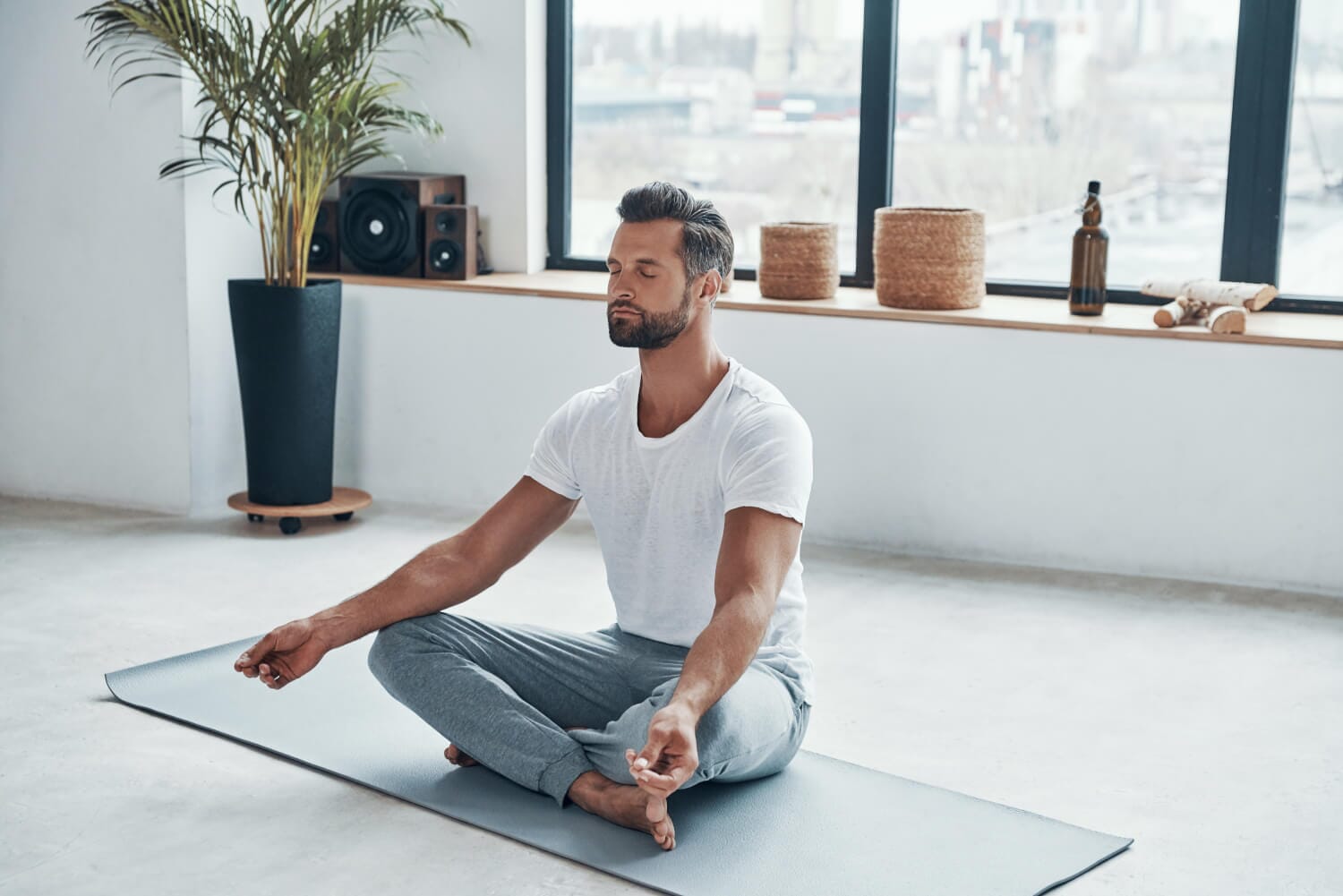
by Stefan
on Feb 25 2023
Why Men Should Do Yoga! An Overview
Many men have the misconception that yoga is only suitable for women. Fortunately, this is completely false – gentle flows are also more than beneficial for men. Anyone who wants to get physically fit and simultaneously train their muscles can seek out the best yoga exercises. In this article, you'll learn why gentle yoga flows can become part of every man's daily routine.
Misconception: Yoga is only for women
Many people have the misconception that yoga is always gentle and easy – but that's far from the truth. In reality, yoga can be just as strenuous as a light or moderate workout at home or in the gym. Hot yoga, Ashtanga , and Vinyasa are known for their strenuous nature. Furthermore, it's not true that women generally train more easily. All in all, the asanas from Buddhist teachings can be just as demanding as other physical exercises and are therefore an ideal addition to the exercise routine of active men.
On the other hand, yoga can be gentle. Anyone who typically participates in other high-impact sports knows how beneficial it can be to do gentle physical exercises. Yoga is perfect in this case – Yin Yoga helps stretch your fascia and loosen the muscles throughout your body. And this point is just as important for men.
A little fact at the end: In ancient India, it was men who practiced these exercises. Only here in Germany, there are still more women in the gyms, which doesn't mean you can't change this situation at any time.
Which types of yoga are suitable?
There are many different styles of yoga, each with a different impact on physical, mental, and emotional well-being. To find the perfect style for you, you should first ask yourself what you want from your yoga class. Do you want to stretch your body and relax? Then Yin Yoga is perfect for that. If you're a beginner, Yin Yoga or Hatha Yoga are recommended. If you still want to get a light workout on your non-workout day, a gentle Vinyasa Flow might be a good option.
Want to get your body sweating? You don't necessarily have to go to the gym for that. Opt for a hot Bikram yoga flow (hot yoga): Here, you perform the various sequences at a room temperature of around 35°C. Power yoga (an American version of Ashtanga yoga, where the movements can be adapted to the yogi) is also perfect for toning and strengthening your body and building muscle and strength.
Not convinced yet: Why is yoga good for men too?
Mat exercises have many health benefits—but not just for the body. Deep breathing harmonizes mind and soul. This is especially important for people under a lot of stress. If you sometimes feel out of balance, the right exercises can restore inner balance. To achieve this, you should practice the appropriate breathing exercises.
The sequences can also help the body relax after a strenuous endurance workout. Muscles and tendons are relieved and strengthened after exercise. The mind and soul also find peace with various flows from Kundalini Yoga or Yin Yoga.
Other important reasons why men should do yoga
Today's society, the demanding work routine, and personal problems mean that many people struggle to relax or experience other problems. Yoga flows can be helpful for the following conditions:
a) Helps with sleep problems
Do you have trouble falling asleep? Then these exercises could provide you with a gentle support. Thanks to the inner peace, you'll find it much easier to drift off into a deep sleep.
b) Body, mind and soul are brought into harmony
Today's everyday life is demanding, which inevitably means that everyone has to find their own method to achieve balance. If you haven't found a suitable way yet, you can take the time to practice yoga and meditation on your cushion . A yoga session should ideally always end with shavasana or a short, guided meditation.
c) Are you inflexible?
Flexibility isn't just sexy, it's also beneficial. Being flexible and agile makes other sports much easier. It also reduces the risk of injury, especially if you participate in other high-risk sports.
d) Concentration is strengthened
If your job requires peak cognitive performance, it may be advisable to consider yoga. Regular yoga practice helps you achieve inner balance. This means that concentration also improves in many cases.
e) Relieve back or neck pain
Many men complain of back pain. If this is also the case for you, you can try yoga. Certain exercises specifically strengthen your back, shoulders, and arms, and relax your neck.
f) Your own body awareness improves
If you feel like you're barely feeling your body, you can incorporate the asanas into your daily routine. Remember that these special yoga flows increase your awareness of your body, improving your body awareness and sensitivity. Many men learn to perceive their bodies this way—many can barely feel their physical needs.
g) Mindfulness is improved
People who are stressed have difficulty concentrating on the present moment. A daily yoga practice helps you become more and more engaged with the here and now. This is essential for long-term happiness and contentment, as well as for strengthening self-awareness. Accepting your feelings also becomes easier with a regular yoga practice.
h) Stamina and perception during sex are improved
When you're in tune with your body, your sex life will naturally improve. You'll feel better, be able to stay in certain positions longer, and your body will be stronger. You'll also be more mindful, which in turn will have a positive effect on your sex life. Naturally, your self-confidence will also be higher, allowing you to enjoy intimate moments even more.
i) Successful footballers also do yoga
While this isn't the only reason, it should still motivate you to try the asanas. There are many professional athletes who practice yoga daily. Would you like to be one of them? Then experiment and find the best asanas for you to balance your body.
If you're a man, tell us if you already incorporate yoga into your daily routine? If so, what benefits does it bring you?
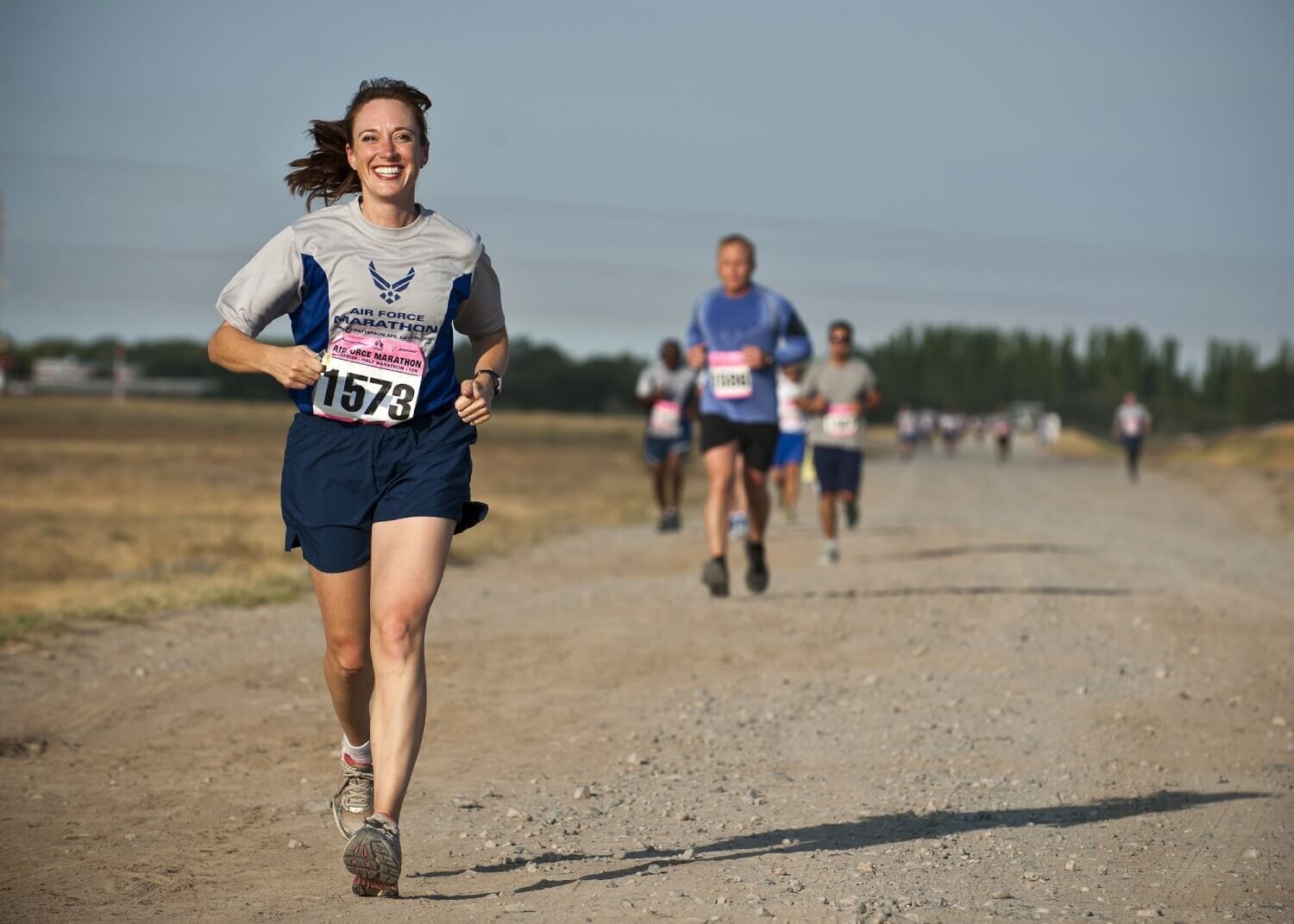
How to choose the right running clothes for every season
by Stefan
on Feb 09 2023
Choosing the right running gear for each season is an important decision to make before tackling your run. Whether it's short sprints or long runs, appropriate clothing is crucial to ensuring comfort and performance. Below are some tips for choosing the right running gear for each season.
What type of running clothing is best for running in different weather conditions?
Choosing the right running clothes should primarily depend on the weather. For warm days, choose lightweight and breathable clothing to help you cool down. In cold weather, wear a layer of windproof and water-repellent material. Another important element of running clothing is good running shoes. These should fit well and support your weight. They should also have good cushioning to protect your feet from injury.
For rainy days, we recommend a hooded raincoat or a waterproof jacket, as well as waterproof trousers or gaiters for your legs. Gloves and hats also help keep your body and head warm.
How can you find running clothes that fit well and are comfortable?
Comfort and a good fit are essential when choosing the right running clothes. First, consider what type of clothing you need. For example, if you're only running short distances, a T-shirt and shorts are perfectly sufficient. For longer distances, we recommend special running pants or shorts and breathable tops.
When choosing a size, always refer to the manufacturer's size chart and try on several sizes if necessary. It's important that the clothing doesn't fit too tightly and offers you enough freedom of movement. Materials also vary: Some fabrics are lighter than others and offer more breathability.
How to choose the right running clothes – tips and tricks
Your running clothes should not only be comfortable but also breathable and lightweight. A good choice is a T-shirt or tank top made of cotton or polyester. Both materials are breathable and keep you cool. However, for longer runs, special functional shirts are recommended, as they absorb more moisture than regular shirts.
For pants, choose leggings or sweatpants that offer enough freedom of movement while keeping you warm. Make sure the pants are stretchy and don't have any seams that can get in the way while running.
Also, don't neglect socks: Avoid cotton socks and opt for synthetic materials like polyester or nylon instead – these will keep your feet drier and reduce the risk of blisters.
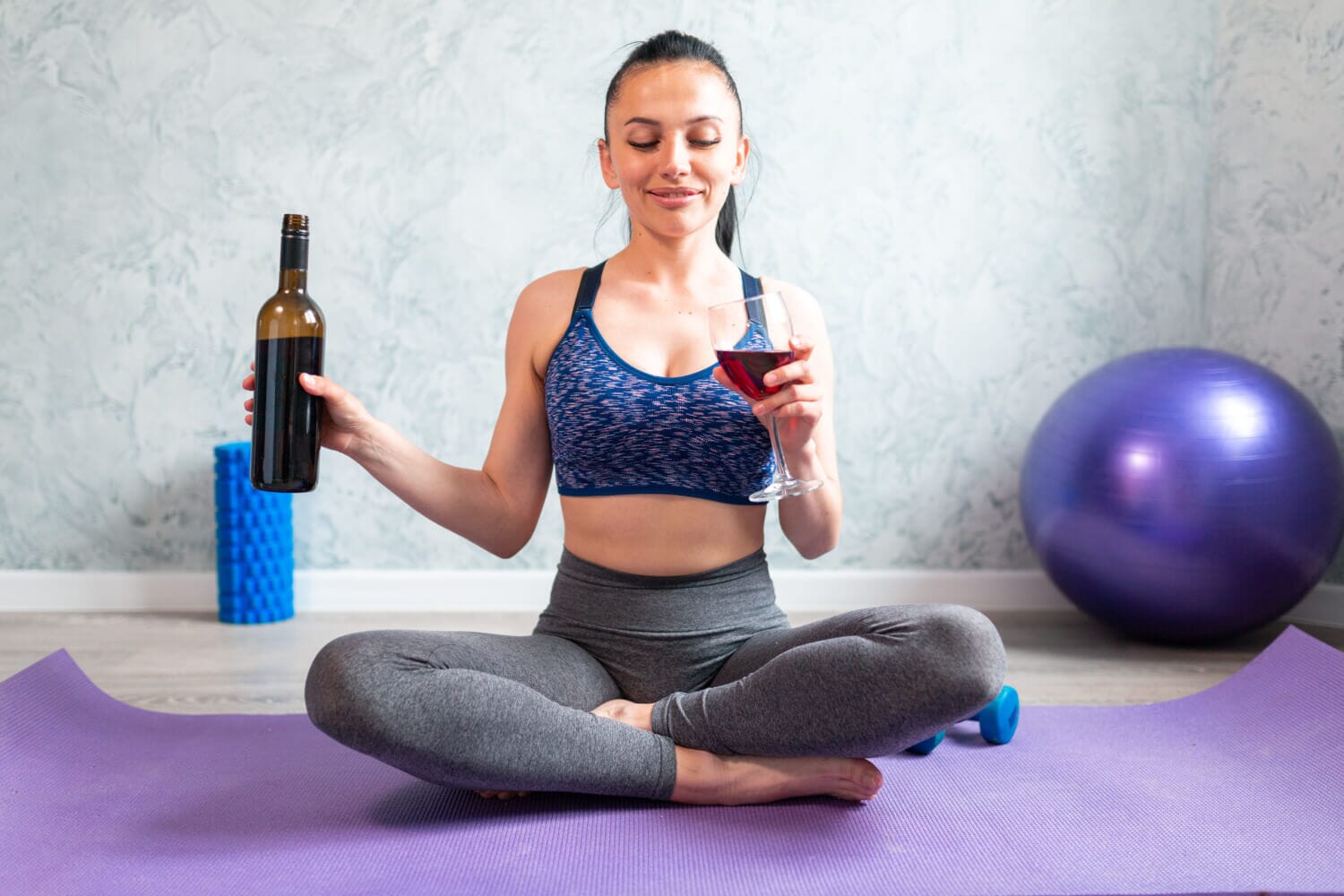
by Stefan
on Feb 03 2023
Wine Yoga: What is it?
Yoga is versatile: Numerous yogis celebrate the asanas from Buddhist teachings and know exactly what benefits they have for the body, mind, and soul. The different styles create variety. To delve even deeper, here's a little insider tip: a glass of wine. Have you never heard of it, but it appeals to you? Then let the information in this article inspire you. Perhaps you'll enjoy a sip of wine at your next yoga class and experience the session with a whole new feeling.
Fun or serious: Wine yoga – an explanation
Yoga itself is a teaching that originates from Buddhism and is reminiscent of purity, spirituality, and self-development. At first glance, yoga and wine might not seem like a good match. Nevertheless, more and more people are becoming convinced by this combination. The basic principle is that fun and exercise are paramount.
What is done in wine yoga?
Those who choose this version of yoga can look forward to a delicious wine. This drink, already praised in the Bible, makes its way into this routine and has a few surprises in store. During the yoga practice, the best wines are tasted—red or white, depending on your taste. Perhaps you know the feeling that a little alcohol lightens the mood and lets tension dissipate. This is precisely what practitioners of wine yoga aim to achieve.
At the end of the yoga class, no participant is sober and may be slightly tipsy, depending on their own judgment. Participants' experiences vary widely. If you desire mindfulness, relaxation, and joy, an hour of wine yoga can be beneficial. It's a different story if you don't drink alcohol or if it doesn't agree with you.
Of course, the goal isn't to drink so much that you can't perceive anything anymore. This point is especially important for beginners. If you're not used to practicing asanas, a clear mind and full body awareness are essential. However, if you're already an advanced yogi, you can easily give wine yoga a try.
What are the benefits of yoga with wine?
To give you a better insight into this yoga practice, we would like to list the benefits.
Relaxation is usually significantly higher when you're slightly tipsy on the yoga mat . This is because certain bodily functions are reduced under the influence of alcohol, and relaxation occurs more quickly.
Your mind is noticeably quieter after drinking a glass of wine, meaning that comparisons with other yogis are less intense. You focus much more on yourself and find more balance within.
You'll become looser and be able to relax more during the asanas. Perhaps you'll even be able to sink deeper and bring even more well-being into your body. Those who find it difficult to turn off the carousel of thoughts can try this option.
Many people find it easier to focus on relaxation. And sometimes something funny can come out of it.
There are also studies that explain that red wine can boost fat burning. This fact is particularly interesting for yogis who want to lose weight.
In combination with meditation on the comfortable cushion , the effect can be further intensified.
Is it a contradiction to do yoga and drink wine?
From experience, there will certainly be yogis who say that these two components don't go together at all. This is particularly because drinking wine, beer, etc., puts the mind and body into a clouded state. In this context, it should be noted that this practice is neither about flowing through the asanas while drunk nor about overdoing it in any other way.
Many people report experiencing balance problems, which can be disadvantageous when practicing asanas. Ultimately, everyone has to decide for themselves whether they want to try this trend or not.
When is yoga with wine right for you?
Depending on whether you drink alcoholic beverages or not, yoga with half a bottle of wine (of course, everyone has to find out the amount for themselves) may be advisable to enhance the recovery in your body and mind.
If you are open to this experience and just want to try it out, you should do so.
You want to sink even deeper into mindfulness and experience how alcohol in combination with yoga affects you.
You find it difficult to switch off your thoughts and have not yet found a suitable way to do so.
You love trying different wines and want to combine this with sports in a meaningful way.
It's okay for you that the focus isn't on the effectiveness of yoga exercises; instead, the focus is on fun and enjoyment.
You want to experience something special together with your partner.
Finding the right event – here’s how
If you've decided that this is something you absolutely want to experience, then it's time to find the perfect event for you. This trend, which originated in the USA, is increasingly gaining ground here, so you'll find plenty of providers in Germany.
First and foremost, you need to know what you want. Often, the different yoga styles or the presentation of the program differ from one another. Furthermore, some events may only serve red or white wine. Here, you'll have to decide for yourself what you prefer and which event you want to attend.
It can be very helpful to travel to a wine-producing region, where you can sample local specialties.
If all of this is too much effort for you, you can buy a bottle of wine with your best friend or partner and do yoga at home with a few sips of wine.
Have you ever tried yoga with wine? If so, how was the experience?
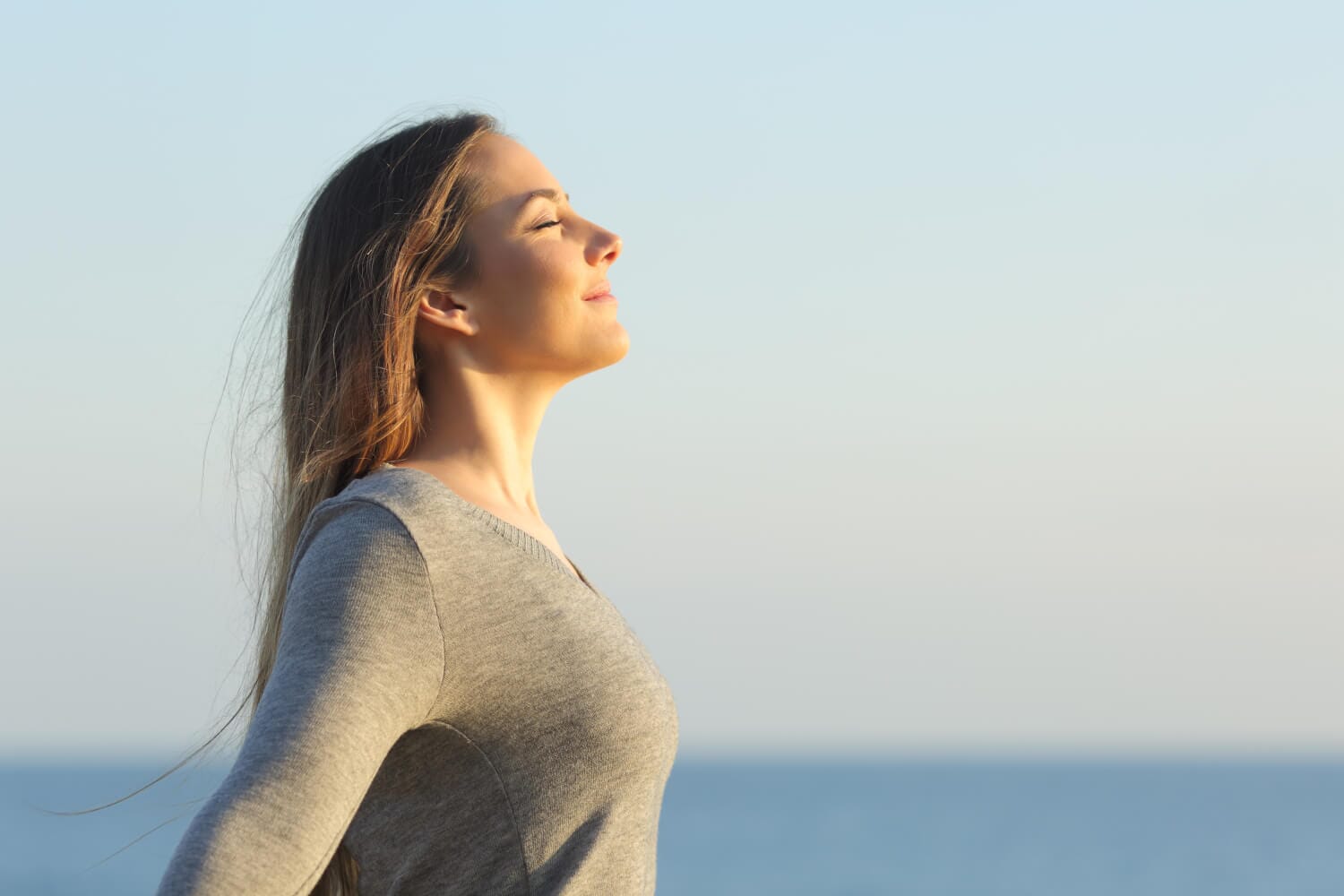
by Sandra Buchwald
on Jan 28 2023
Yoga of the Air - How you can gain new lightness through yoga
The elements of fire, water, earth, and air are the foundation of our being. Humans, animals, and plants receive valuable energy from them. Elemental yoga supports these nourishing and healing processes. Yoga blogger Sandra Buchwald describes which yoga practices are suitable and the contribution of Ayurvedic nutrition.
This article is about the yoga of air.
"I can barely breathe." Or, "It feels like everything is twice as difficult as usual." These are statements made when the lightness of the moment has vanished. Given all the problems 2022 has brought us, this is no surprise. Numerous restrictions have burdened us and made life difficult, literally.
Good to know: Yoga supports you in discovering and enjoying a new sense of lightness and freedom, a sense of carefreeness and ease. This blog post offers ideas on how you can shed restrictive and burdensome shackles through the yoga of air.
The element of air: the lightness of being
There is no movement without breath, and no breath without movement. The rise and fall of your chest and abdomen proves this to you. Every day. Every second. Through your breath, you supply yourself with vital oxygen, which travels through your blood vessels to every tiny corner of your body. Your mind and soul are also moved, nourished, and activated by the breath. Blockages are released. These are all good reasons why asanas and breath are inextricably linked in yoga. Yoga of Air utilizes this connection in a special way.
These yoga exercises make you light and free
Many people work at a desk all day, their upper bodies hunched forward. This is an example of how our natural breathing space can be restricted by everyday life or work. This one-sided posture shortens the chest muscles, and the upper back, as its counterpart, tends to weaken. Yoga, which serves the element of air, also offers valuable asanas that expand the chest area and give you the joyful experience of opening your heart both externally and internally.
Many of these "heart openers," as they are affectionately called by yoginis and yogis, are true classics among asanas. A typical example is the Cobra Pose (Bhujangasana). A well-known and popular asana from both the Sun Salutation (Surya Namaskar) and the traditional Rishikesh sequence, the Cobra Pose is representative of the many backbends found in Aerial Yoga.
An easier alternative to Cobra Pose is the Sphinx Pose, Salamba Bhuangasana. It's easy to perform even for beginners because the forearms are comfortably positioned on the mat. Even more comfortable is Heart Opening from a supine position. Roll vertebra by vertebra into Shoulder Bridge Pose (Setu Bandhasana). There, you can either support yourself with your upper arms and elbows or tie your hands underneath your body to intensify the bridge. Want more effective asanas? Fish Pose and Upward-Facing Dog are also classic backbends and heart openers!
Graceful and effective at the same time are two kneeling heart-opening poses you're surely familiar with: the deep lunge (Anjaneyasana) and the camel pose (Ushtrasana) – both of which are also great hip openers, by the way. If you prefer standing, the Warrior I or Sun Warrior poses are recommended. Both are also great to practice outdoors, so your yoga practice will be enriched with an extra dose of oxygen.
Yoga of the Air: Breathing is the be-all and end-all
Pranayama is an essential component of a yoga practice designed to promote the air element. Both the heart-opening asanas and the breath are perfect for creating a soothing space, a space filled with air, lightness, and freedom. Through backbends, we create the foundation for giving space to our feelings. Through conscious breathing, we connect to a life that, through lightness and permeability, offers precious treasures.
Young woman practicing breathing yoga pranayama outdoors in moss forest on background of waterfall. Unity with nature concept
Be light and free – which yoga style suits you?
If you've read the examples of Air Yoga, you'll probably realize that Hatha Yoga provides a solid foundation for it as well. Whether elements from the Sun Salutation or the Warrior Poses, Hatha Yoga and the four elements are inextricably intertwined. The beauty of the Hatha style is the connection between air and earth. It is particularly healing because it recognizes that we need both: roots and wings.
Things get especially airy, however, when you devote yourself to Aerial Yoga. Wrapped in sturdy blankets, you practice yoga poses – completely independent of the laws of gravity. Free floating perfectly supports aerial yoga. Depending on your mood (and, of course, what the Aerial Yoga school offers), this light and airy form of yoga can also be complemented with elements from dance or acrobatics. You can express your feelings in a wonderfully creative way.
Backbends are also well-suited to Yin Yoga. The simplest asana: Place a bolster or folded blanket under your thoracic spine and open your heart space while lying on your back.
Activate the heart chakra
Inextricably linked: Air Yoga and the heart chakra (Anahata Chakra). When you expand your chest with the heart openers, you also stimulate your heart chakra. Located in the center of the chest, it is important for expressing our feelings. This makes us free and light. Try it!
Anahata, heart chakra symbol. Colorful mandala.
Yoga of the Air and Ayurvedic Nutrition
Ayurveda connects the air element with the Vata constitutional type. This dosha needs a diet that provides calm and warmth. Lightness comes from anything that isn't burdensome and not difficult to digest. Soups and stews are ideal, but risotto is also good. Vegetables should be cooked. Carrots, sweet potatoes, and pumpkin are perfect. If you like sweet things, try warm porridge. Fruit is best made into compote or warmed up. Baked apples are a fragrant example.
Sufficiently warm liquid is important. Teas are especially beneficial. Good flavors that support the air element include vanilla, ginger, and basil.
Be light through meditation
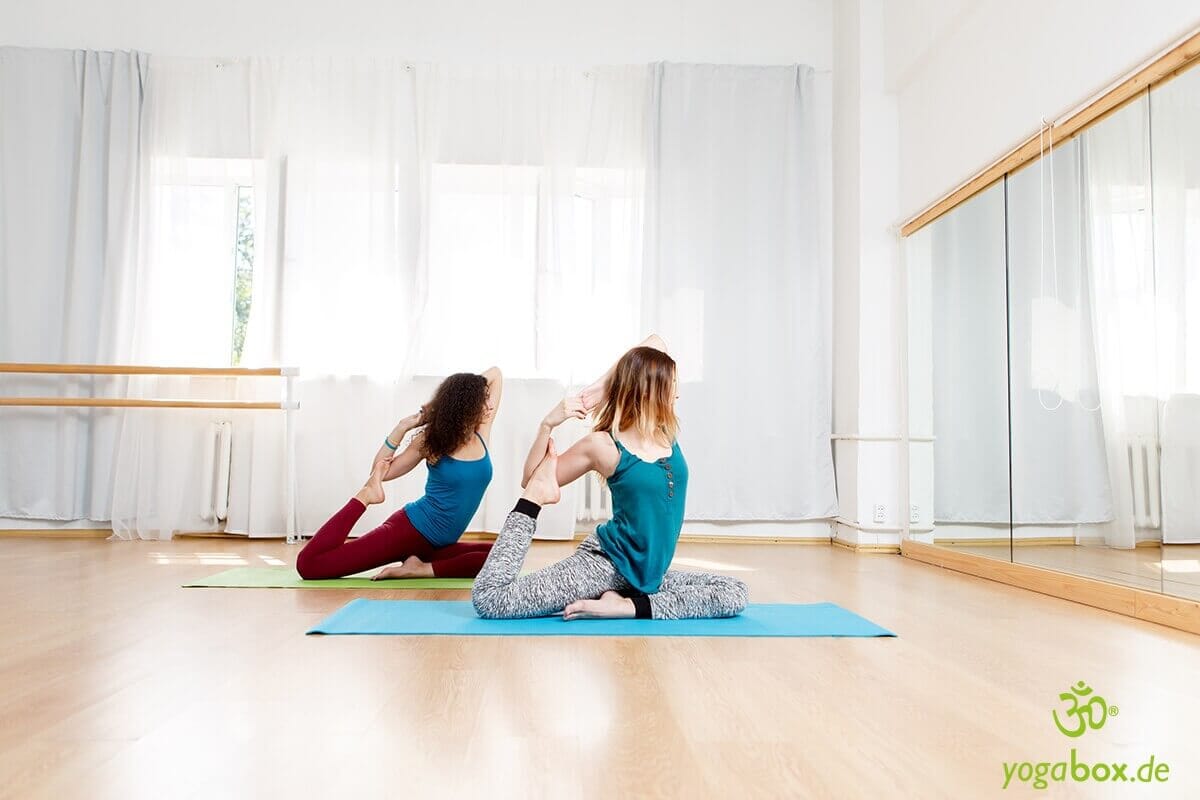
The eight limbs of Raja Yoga – what are they?
by Nick
on Jan 22 2023
The eight limbs of Raja Yoga – Image © snedorez / 123rf.com
Raja Yoga is a truly life-changing teaching. The name itself conveys the profound significance of this style of yoga. Raja means "king," thus it is the "royal" yoga. The eight stages/limbs of this yoga style are unique and can transform the yogi's life in a lasting way. If you would like to learn more about royal yoga and embark on this path, you can read this article. It will inspire you to greater inner freedom.
Raja Yoga: Definition and a short explanation
Yoga is a very ancient teaching and encompasses various techniques for achieving enlightenment and mastery of the mind. Unlike traditional yoga styles such as Hatha Yoga , Kundalini Yoga, or Yin Yoga, Raja Yoga relies on different fundamental principles. Raja Yoga is one of the four paths of yoga; the other three are Karma Yoga, Bhakti Yoga, and Jnana Yoga.
Raja comes from the ancient Sanskrit teachings and means "king" or "ruler." All this knowledge goes back to the wise man Patanjali , who remains a well-known name in this field to this day. He wrote the Yoga Sutra, which can also be described as a guide to yoga. Many equate Ashtanga Yoga (eight-limbed yoga) with Raja Yoga.
The goal of Raja Yoga is to let go of "control" over the mind, which is often difficult these days. Many people are so overwhelmed by their daily lives and all the challenges they face that this is reflected in a very restless mind.
What can you do to calm yourself down?
Depending on your personality and the challenge you face, there are various ways to become calmer. Raja Yoga uses various meditation techniques, breathing techniques (pranayama), and physical asanas. Of course, self-observation is also essential for becoming calmer and more aware, as well as for going through everyday life with greater focus.
The Eight Limbs of Raja Yoga: On the Path to a Free Spirit
Many people are restless and turn to yoga for this problem. Raja Yoga helps you become calmer and more peaceful within. The reason people are so scattered and restless is the kleshas. These are the passions that cloud and confuse the mind and thoughts.
Fear of death (Abhinivesha)
too much selfishness (Asmita)
Knowledge that is not true (Avidya)
Adhering to certain preferences (Raga)
Excessive aversion (Dvesha)
The goal of Raja Yoga is not to completely eliminate all these passions. Instead, it is important that you follow the path of Ashtanga Marga and reduce the influence of the kleshas on your behavior.
Overview: the eight limbs of Raja Yoga
The following section introduces the eight limbs of Raja Yoga. The order in which they are performed is not important. However, in order to develop spiritually, all steps must be practiced and studied.
1. Yamas (dealing with the world, environment)
We don't live alone in this world, so it's essential that we live in harmony with the environment. Our interactions with other living beings are important. Yama is divided into five sub-themes, each of which is already very intensively addressed (e.g., Ahimsa : striving for the absence of injustice, treating all living beings with respect, Asteya : not stealing or taking what isn't yours, etc.).
2. Niyamas (how to deal with yourself)
This section is about engaging with and reflecting on oneself. Here, too, there are five sub-points that demonstrate how one's mind and body should be treated, for example, shaucha (purity of the body), santosha (modesty with one's possessions), svadhyaya (exploration of one's self), etc.
3. Asanas (physical exercises)
The asanas are almost the most well-known aspect of the eight-limbed path and the aspect that many people in the Western world also practice. There are countless different yoga exercises for the mat that harmonize body, mind, and soul. They also increase the practitioner's life energy and physical vitality. The effect of the exercise naturally always depends on the yoga style; Hatha Yoga has a different effect than Vinyasa, yet they all help people achieve inner peace.
4. Pranayama (breathing techniques)
This point is also relatively well-known, as people all over the world practice breathing exercises in their daily lives. This requires a good degree of physical discipline. Prana is the energy that surrounds us all. There are various breathing exercises, most of which involve the same components:
Exhale
Hold your breath with empty lungs
Inhale
Holding your breath with full lungs
5. Pratyahara (dealing with the senses)
This section is about controlling the senses. Pratyahara describes the withdrawal of the senses to protect yogis from sensory overload. Furthermore, no one is distracted from the essential tasks. This allows you to increase mindfulness.
6. Dhyana (meditation)
In this stage, you'll learn about meditation. The goal of a meditator is to have fewer thoughts in their head while resting on the cushion , or to let them drift away. This is very difficult, especially for beginners, but with time and a little practice, you'll get better and better. With enough practice, you'll notice physical and mental differences; even in stressful situations, Raja Yoga helps you remain calmer and more focused.
7. Dharana (concentration)
If you want to take this path, you should learn to concentrate completely on one thing. No one should be constantly distracted. In this context, try to focus on one specific thing during the exercise. Over time, this will become easier.
8. Samadhi (inner freedom)
This point marks the culmination of the path and the goal of every yogi. The goal is to achieve the state of absolute being: a moment in which you can merge with reality, become one with God, and feel all knowledge within you.
How can you integrate these stages into your life?
These stages may seem very challenging at first and will naturally require a lot of time to integrate into your life. Initially, it's important that you know all these elements and gradually incorporate them into your daily routine. Everyone will have different preferences.
Do everything at your own pace and don't let yourself get stressed.
Don't compare yourself
Read a book for more information to gain a better understanding.
Find like-minded people with whom you can be motivated to follow the path
Do you already practice these eight limbs in your daily life ? Have you already integrated them all?
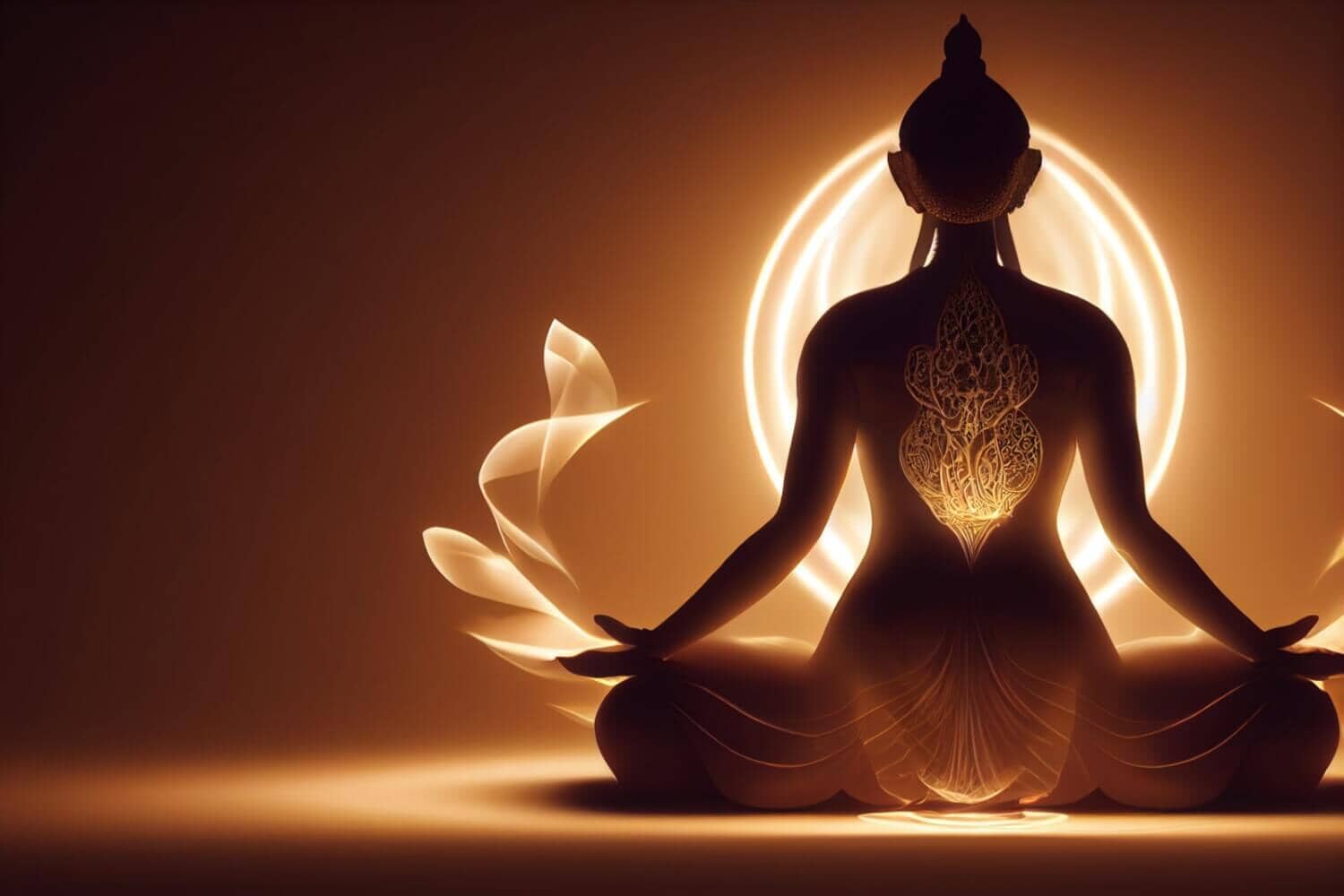
by Sandra Buchwald
on Jan 20 2023
How to gain new energy through yoga
Yoga is a holistic practice. It has positive effects on body, mind, and soul. This is especially true when the four elements of earth, water, fire, and air are incorporated. Why not give it a try at the start of the new year? Yoga blogger Sandra Buchwald has inspiring tips for you.
This article is dedicated to the yoga of fire.
"This year has drained all my energy." - Many people who took stock of 2022 at the turn of the year feel powerless, exhausted, and empty. This is no wonder. The coronavirus pandemic, climate change, the war in Ukraine, and inflation have all taken a toll on our personal energy reserves. With so much bad news, it's not easy to start the new year courageously and motivated.
How do you manage to recharge your energy batteries? - You will receive valuable support through your regular yoga practice. In this article, you will learn about the energetic benefits of fire yoga.
https://videopress.com/v/DqcQfwPQ?resizeToParent=true&cover=true&playsinline=true&posterUrl=https%3A%2F%2Fwww.yogabox.de%2Fblog%2Fwp-content%2Fuploads%2F2023%2F01%2Fadobestock_467128006_mp4_std.original.jpg&preloadContent=metadata&useAverageColor=true
The element fire: energy from the sun
Why do we get spring fever when the first rays of sunshine of the year tickle our noses? Why do we love spending our holidays in the sunny south? And what is the reason why even those who are grumpy in the morning find it easier to get up when the sun is shining? Sunlight causes our bodies to release serotonin, a true happiness hormone. It also produces the sunshine vitamin D and simultaneously slows down the production of the sleep hormone melatonin.
All of this gives us energy – and through the yoga of fire you can recharge your batteries even when it's cloudy and rainy outside.
These asanas ignite fire energy
Whether it's yoga or a fitness exercise, you've probably heard yoga teachers or trainers tell you to tense your stomach and draw your navel inward and upward. This advice primarily serves to protect your spine and avoid unhealthy posture. In yoga, this practice also serves the purpose of generating heat. You ignite this inner heat—the fire—through body tension. It gives you new energy and arms you against the challenges that await you every day. A good example of an asana that requires a lot of body tension is Navasana, the Boat Pose.
Rotations also characterize Fire Yoga. Typical twists include the seated twist (Ardha Matsyendrasana) and Parivrtta Trikonasana (the twisted triangle). A particularly graceful asana is Parivrtta Utkatasana, the twisted chair pose: You first assume the classic chair pose (Uttkatasana) and place your hands in prayer position (Anjali Mudra). Then you turn to the side and press your elbow or upper arm against the knee on the other side of your body. Such twists detoxify the internal organs and activate your metabolism.
https://videopress.com/v/yD1dvTgt?resizeToParent=true&cover=true&playsinline=true&posterUrl=https%3A%2F%2Fwww.yogabox.de%2Fblog%2Fwp-content%2Fuploads%2F2023%2F01%2Fadobestock_183304357-1_mp4_avc_240p.original.jpg&preloadContent=metadata&useAverageColor=true
A particularly effective massage for the internal organs is offered by asanas that involve a twist from a prone position. Try the Scorpion Twist, where you twist to the left from a prone position and place the foot of your bent right leg on the mat behind your back. Of course, always practice the opposite way too!
The Sun Salutation (Surya Namaskar) already carries the power of fire within itself: Enjoy how this dynamic sequence gives energy, courage, and motivation!
Yoga of Fire: Paying attention to your breathing
Heat, intensity, and body tension play an important role in Fire Yoga. Therefore, breathing is especially important in the demanding asanas. Through special breathing techniques, you can draw on valuable life energy. Practice Ujjayi and Kapalabahti. These yogic breathing techniques are considered purification techniques and generate energetic heat.
Awakening valuable energies – which yoga styles are suitable?
The classic yoga style with which you can ignite the beneficial heat energy within you is Vinyasa Yoga. It is characterized by its dynamic and flowing sequences. The individual asanas are usually supported by guided breathing. The graceful, seamless movements are performed and connected without beginning or end. This flow creates the heat that blazes within you like fire and gives you new energy. You can also practice Vinyasa Yoga in various combinations, for example, as Ashtanga Vinyasa Yoga.
Power Yoga is also an important representative of the Yoga of Fire. The name says it all: This demanding yoga style promotes strength and endurance, but also gives you the vital inner energy to mentally overcome everyday challenges.
When it comes to external heat, Bikram Yoga is unbeatable. In this style of yoga, you practice a set sequence of 26 asanas. What's special about it: The yoga room has a temperature between 35 and 40 degrees Celsius, so the energy of the fire is activated by the external warmth. But of course, you can also create a different warm setting: What fire yoga could be better than dynamic asanas in the sunshine on the beach or in your own garden?
Source of energy: the solar plexus chakra
Yoga and the chakras are closely connected and mutually reinforce each other. Fire yoga includes a chakra whose name already includes the sun: the solar plexus chakra. The Sanskrit term "Manipura," the luminous jewel, is also sunny. This chakra is located above the navel on the solar plexus. You open this chakra through challenging yoga asanas, but also by courageously facing difficult challenges in everyday life and at work.
Complement Fire Yoga with Pitta food
In Ayurveda, the Yoga of Fire is associated with the Pitta dosha. Warming vegetables and grains should be on the menu if your constitutional type is Pitta, or if you want to generate energetic heat through Yoga of Fire. Choose from nature's rich treasures according to your taste. Buckwheat and amaranth, oats and spelt, broccoli and cauliflower, carrots and potatoes are particularly suitable. Protein-rich meals are perfect for giving you the energy you need. Try well-seasoned stews made with red lentils or chickpeas. Spices are essential in Ayurveda to activate Agni, the Ayurvedic digestive fire. Use plenty of pepper and chili, allspice and cumin, but definitely also ginger. Turmeric and cardamom also go well.
Ginger's natural spiciness also makes it ideal for drinking. Choose between ginger water and ginger tea, depending on your taste and the season. Other valuable teas that support the yoga of fire include licorice tea and teas enhanced with cinnamon.
Meditation for the fire element

